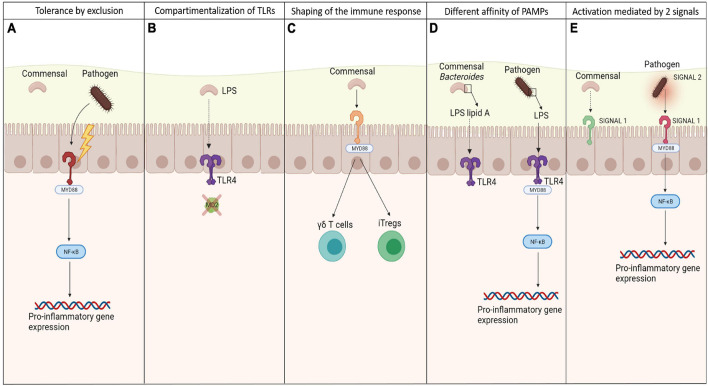FIGURE 1.
Mechanisms of discrimination between commensals and pathogens by TLRs. Different mechanisms exploited by TLRs to discriminate between pathogenic and commensal microbes to keep the tolerance toward the local microbiota, preventing from inflammation: (A) more virulence possessed by pathogens, allowing them to destroy the epithelial barriers and set off an inflammatory state, after being recognized by TLRs; (B) specific compartmentalization of some TLRs and their co-receptors, allowing the recognition of bacterial signals only whether they are able to cross the epithelia; (C) the ability of commensals in shaping the immune system, maintaining the low inflammation rate and a balance between effector and suppressive cells; (D) the different affinity of PAMPs to TLRs so that they are able to recognize only the one relative to pathogens; (E) the need of 2 signals to activate an immune response, which come mainly from pathogens causing stress.

